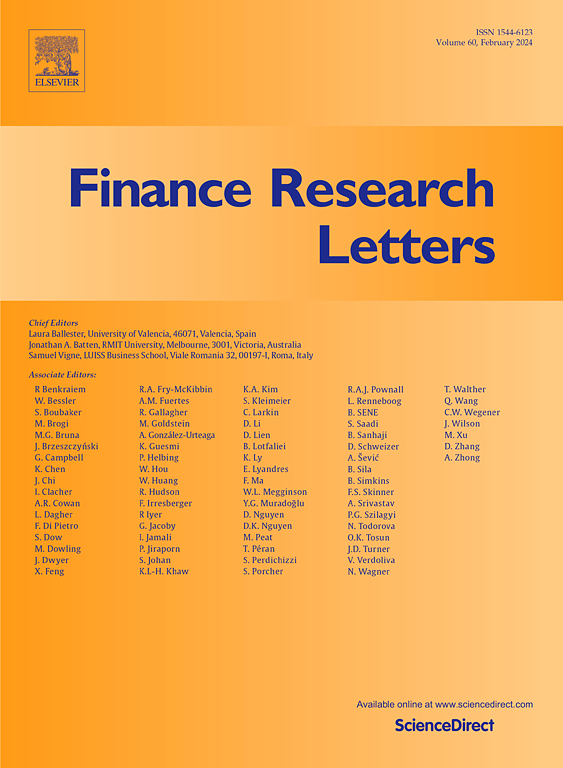预测股市溢出效应的机器学习模型
IF 6.9
2区 经济学
Q1 BUSINESS, FINANCE
引用次数: 0
摘要
我们提出了一套基于递归神经网络的机器学习模型,用于预测股市溢出效应。虽然经典的溢出模型,如Diebold-Yilmaz方法,可以解释哪些是溢出效应,但我们的目标是预测它们,并提供一个早期预警系统。为了评估我们的建议的有效性,我们将我们的预测与14个主要股票市场指数的实际回报和波动溢出进行了比较,这些指数从2000年1月到2024年1月,并考虑了200个滚动窗口测试样本。我们的实证研究结果表明,预测是相当准确的,并且门循环单元网络始终优于其他模型,主要是由于它能够捕获复杂和非线性依赖关系。本文章由计算机程序翻译,如有差异,请以英文原文为准。
Machine learning models to predict stock market spillovers
We propose a set of machine learning models, based on recurrent neural networks, for the prediction of stock market spillovers. While classic spillover models, such as the Diebold–Yilmaz approach, can explain which are the spillover effects, we aim to predict them, and provide an early warning system. To assess the effectiveness of our proposal, we compare our predictions to the actual return and volatility spillovers across fourteen major equity market indices, spanning the period from January 2000 through January 2024, and considering two hundred rolling window test samples. Our empirical findings show that the predictions are quite accurate, and that the Gate Recurrent Unit network consistently outperforms the other models, primarily due to its ability to capture complex and non-linear dependencies.
求助全文
通过发布文献求助,成功后即可免费获取论文全文。
去求助
来源期刊

Finance Research Letters
BUSINESS, FINANCE-
CiteScore
11.10
自引率
14.40%
发文量
863
期刊介绍:
Finance Research Letters welcomes submissions across all areas of finance, aiming for rapid publication of significant new findings. The journal particularly encourages papers that provide insight into the replicability of established results, examine the cross-national applicability of previous findings, challenge existing methodologies, or demonstrate methodological contingencies.
Papers are invited in the following areas:
Actuarial studies
Alternative investments
Asset Pricing
Bankruptcy and liquidation
Banks and other Depository Institutions
Behavioral and experimental finance
Bibliometric and Scientometric studies of finance
Capital budgeting and corporate investment
Capital markets and accounting
Capital structure and payout policy
Commodities
Contagion, crises and interdependence
Corporate governance
Credit and fixed income markets and instruments
Derivatives
Emerging markets
Energy Finance and Energy Markets
Financial Econometrics
Financial History
Financial intermediation and money markets
Financial markets and marketplaces
Financial Mathematics and Econophysics
Financial Regulation and Law
Forecasting
Frontier market studies
International Finance
Market efficiency, event studies
Mergers, acquisitions and the market for corporate control
Micro Finance Institutions
Microstructure
Non-bank Financial Institutions
Personal Finance
Portfolio choice and investing
Real estate finance and investing
Risk
SME, Family and Entrepreneurial Finance
 求助内容:
求助内容: 应助结果提醒方式:
应助结果提醒方式:


